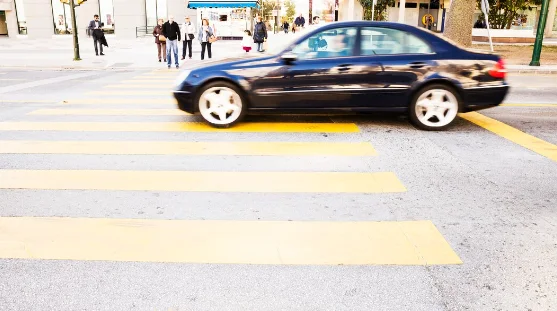The term “street legal” serves as the golden standard for vehicles. It’s a badge of compliance, indicating that a car meets the intricate web of federal and state regulations designed to ensure safety, environmental responsibility, and operational integrity on public roads. Whether you’re eyeing a brand-new sports car from a dealership or considering a custom build from the ground up, understanding what makes a car street legal is crucial.
This comprehensive exploration delves into the requirements and processes that distinguish a street-legal vehicle from one that’s confined to private tracks or show floors.
The Essence of Street Legality
At its core, being “street legal” means a vehicle is equipped and built in a manner that adheres to all regulatory standards for operation on public roadways. Every car rolling out from a dealership is expected to meet these criteria, equipped with the necessary features and documentation to embark on its journey from the showroom to the street.
However, the waters become murkier with private sales and aftermarket modifications, where previous owners’ alterations or neglect might skirt or directly violate legal standards. It’s in these scenarios that the advice and inspection services of a seasoned mechanic become invaluable, offering a bridge to legality and safety.
What are the requirements for a street legal vehicle?
To demystify the concept of street legality, it’s essential to break down the requirements into two broad categories: external and internal. Each category encompasses a range of features and systems designed to promote safety, efficiency, and environmental stewardship.
External Requirements
- Ground Clearance and Emission Control: The height of a vehicle’s undercarriage affects not only its aesthetic appeal and performance but also its safety and environmental impact. Regulations aim to balance the risk of undercarriage damage and rollovers with standards on emission control systems that safeguard air quality.
- Tires and Brakes: Functional tires protected by fenders or mud flaps prevent road debris from becoming airborne hazards, while the legal mandate for a parking brake ensures a vehicle can be securely stationed, whether on a hill or flat surface.
- Bumpers and License Plates: The presence and positioning of bumpers play a crucial role in vehicle safety, just as the visibility and illumination of license plates are pivotal for identification and law enforcement purposes.
- Headlights and Hood: Lighting systems, including headlights and taillights, are vital for visibility, whereas a secured hood protects the engine compartment, contributing to overall vehicle safety and integrity.
- Mirrors and Windshield: Mirrors enhance the driver’s field of vision, reducing blind spots and facilitating safer maneuvering, while windshields and their wipers maintain visibility during adverse weather conditions.
Internal Requirements
- Seat Belts and Steering Wheel: The ubiquity of seat belts in vehicles underscores their importance in protecting occupants, while steering wheel regulations ensure driver control and comfort.
- Horn and Rear View Mirror: A functioning horn provides a means of audible communication with other road users, and the rearview mirror offers critical visibility of the road behind, complementing the vehicle’s external mirrors.
Can you get insurance for a car that is not street legal?
If your car can be driven but doesn’t meet legal requirements for the road, certain car insurance providers might refuse to insure it. They could end your policy, particularly if they discover any modifications to the car that are against the law. Often, car insurance agreements have clauses that specifically mention they won’t cover illegal alterations to the vehicle. If your car isn’t legally compliant, your insurer may set a deadline for you to correct these issues, or they will cancel your insurance coverage.
The Road Ahead
The journey to ensure a vehicle is street legal is both a responsibility and a rite of passage for car owners. It’s a commitment to safety, environmental care, and adherence to the laws that govern our roads. While the path to compliance may seem daunting, it’s paved with the collective wisdom of regulators, mechanics, and fellow drivers. In navigating these regulations, we not only protect ourselves and our fellow travelers but also contribute to a legacy of responsible vehicle ownership and operation.
In essence, the concept of a street-legal vehicle transcends mere technicality. It embodies a harmonious blend of innovation, regulation, and civic duty, ensuring that our roads remain conduits of safe and sustainable travel. As we continue to push the boundaries of automotive design and performance, let us do so with a keen awareness of the legal frameworks that guide our journey, ensuring that every mile traveled is a testament to our commitment to safety, legality, and mutual respect on the open road.
FAQs
What happens if I drive a non-street legal vehicle on public roads?
If you’re caught driving a vehicle that doesn’t meet street legality standards, you might face fines, penalties, or even have your vehicle impounded. The exact consequences can vary by location but driving a non-compliant vehicle is generally considered a legal offense.
How do I check if my vehicle complies with emission control regulations?
You can check your vehicle’s compliance with emission control regulations by undergoing an emissions test at a certified testing facility. Many states require these tests as part of the vehicle registration process. Information on local testing centers and requirements can usually be found on your state’s Department of Motor Vehicles (DMV) website.
Can aftermarket modifications make my vehicle non-compliant?
Yes, certain aftermarket modifications can render your vehicle non-compliant with street legality standards. Modifications that significantly alter the vehicle’s emissions, safety features, or structural integrity are most likely to affect compliance. Always check local laws before modifying your vehicle.
Are there exceptions to street legality requirements for vintage or classic cars?
Many jurisdictions offer exceptions or modified requirements for vintage or classic cars. These might include exemptions from certain emissions tests or allowances for original equipment that doesn’t meet current safety standards. Check with your local DMV for specific regulations.
Get the right coverage for your car with tutenagency
New tutenagency customers?
Quote auto insurance online or call (334) 502-5111 to insure your car.

